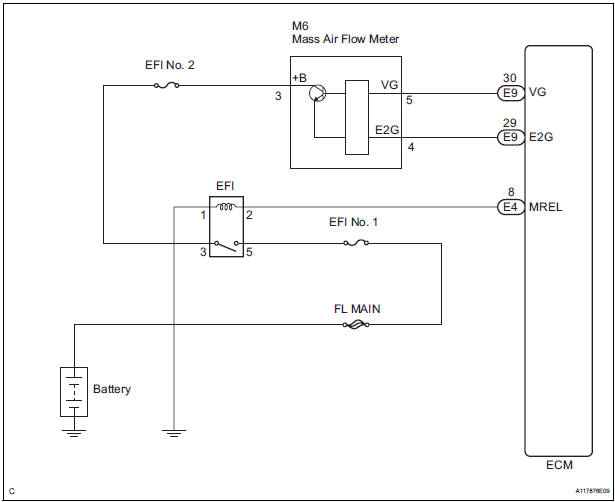Mass Or Volume Air Flow Circuit Low Input

The dreaded "Check Engine" light. For any automotive enthusiast, it's a signal to brace for impact – a potential cascade of diagnostic tests and, inevitably, repair bills. One code that can trigger this unwelcome illumination is the P0102, indicating a "Mass or Volume Air Flow Circuit Low Input." But what does that actually mean, and more importantly, what can you do about it?
Understanding the MAF Sensor
At the heart of this error is the MAF (Mass Air Flow) sensor, or in some cases, the VAF (Volume Air Flow) sensor. These devices are critical components in modern engine management systems. Their primary function is to measure the amount of air entering the engine. This information is then relayed to the engine control unit (ECU), which uses it to calculate the correct amount of fuel to inject, ensuring optimal air-fuel mixture for efficient combustion and minimal emissions.
Think of it like baking a cake. You need the right proportion of flour, sugar, and eggs. The MAF sensor tells the ECU how much "flour" (air) is available, allowing it to accurately add the right amount of "sugar" (fuel).
The P0102 code specifically signifies that the signal voltage from the MAF sensor to the ECU is lower than expected. In simple terms, the ECU is receiving a reading indicating less air is entering the engine than it anticipates, or no air at all. This is a critical discrepancy that can lead to various performance issues.
Causes of a P0102 Code
Several factors can contribute to a P0102 error. Diagnosing the root cause is crucial for an effective and lasting repair. Common culprits include:
- A faulty MAF sensor: The sensor itself could be malfunctioning, providing inaccurate readings or no signal at all. This is often due to contamination, age, or physical damage.
- Wiring issues: Damaged, corroded, or loose wiring connecting the MAF sensor to the ECU can disrupt the signal. This is a common problem in older vehicles where wiring insulation can degrade over time.
- Vacuum leaks: A vacuum leak downstream of the MAF sensor allows unmetered air to enter the engine. The MAF sensor accurately measures the air entering through the intake, but the additional air leaking in throws off the air-fuel mixture.
- Dirty or clogged air filter: A severely restricted air filter can impede airflow, leading to a lower-than-expected reading from the MAF sensor.
- Exhaust leaks: While seemingly unrelated, exhaust leaks, especially near the oxygen sensors, can sometimes indirectly affect MAF sensor readings by influencing the overall engine performance and creating feedback loops in the ECU.
- ECU issues: In rare cases, the ECU itself may be faulty, misinterpreting the signal from the MAF sensor.
Symptoms of a P0102 Code
The symptoms associated with a P0102 code can range from subtle to severe, depending on the severity of the underlying problem. Common symptoms include:
- Check Engine Light: This is the most obvious indicator.
- Poor engine performance: This can manifest as rough idling, hesitation during acceleration, stalling, or a general lack of power.
- Decreased fuel economy: The incorrect air-fuel mixture can lead to inefficient combustion and increased fuel consumption.
- Black smoke from the exhaust: This indicates a rich air-fuel mixture, meaning too much fuel is being burned for the amount of air available.
- Difficulty starting: In some cases, the engine may be difficult to start, especially in cold weather.
Diagnosing and Repairing a P0102 Code
Proper diagnosis is paramount. A mechanic will typically start by visually inspecting the MAF sensor, wiring, and air filter. They will then use a scan tool to read the MAF sensor output and check for any other related codes. Live data monitoring is crucial to see how the MAF sensor is performing under different engine conditions.
Depending on the diagnosis, repairs may involve:
- Replacing the MAF sensor: If the sensor is faulty, replacement is often the most straightforward solution. Always use a quality OEM or equivalent replacement part.
- Repairing or replacing damaged wiring: This may involve splicing wires, replacing connectors, or even replacing entire wiring harnesses.
- Sealing vacuum leaks: Identifying and sealing vacuum leaks can be challenging but is essential for proper engine operation.
- Replacing the air filter: This is a simple and inexpensive maintenance task that can often resolve minor airflow issues.
- Inspecting and repairing exhaust leaks: Address any exhaust leaks to ensure proper engine backpressure and oxygen sensor readings.
- ECU testing or replacement: This is a last resort and should only be considered after all other potential causes have been ruled out.
Real-World Examples and Cost Considerations
The cost of repairing a P0102 code can vary significantly depending on the underlying cause. A simple air filter replacement might cost $20-$50, while replacing a faulty MAF sensor can range from $100 to $500, depending on the vehicle and sensor type. More complex repairs, such as wiring harness replacement or ECU repair, can easily exceed $1000.
For example, a common scenario involves a 2010 Honda Civic with a P0102 code. The initial inspection reveals a dirty air filter and a slightly corroded MAF sensor connector. Cleaning the connector and replacing the air filter resolves the issue. In contrast, a 2015 Ford F-150 with the same code might require MAF sensor replacement due to internal failure, a more costly repair.
In conclusion, a P0102 code can be a frustrating issue, but with a systematic approach to diagnosis and repair, it can be effectively resolved. Understanding the function of the MAF sensor and the potential causes of this code is crucial for any car enthusiast or mechanic.
